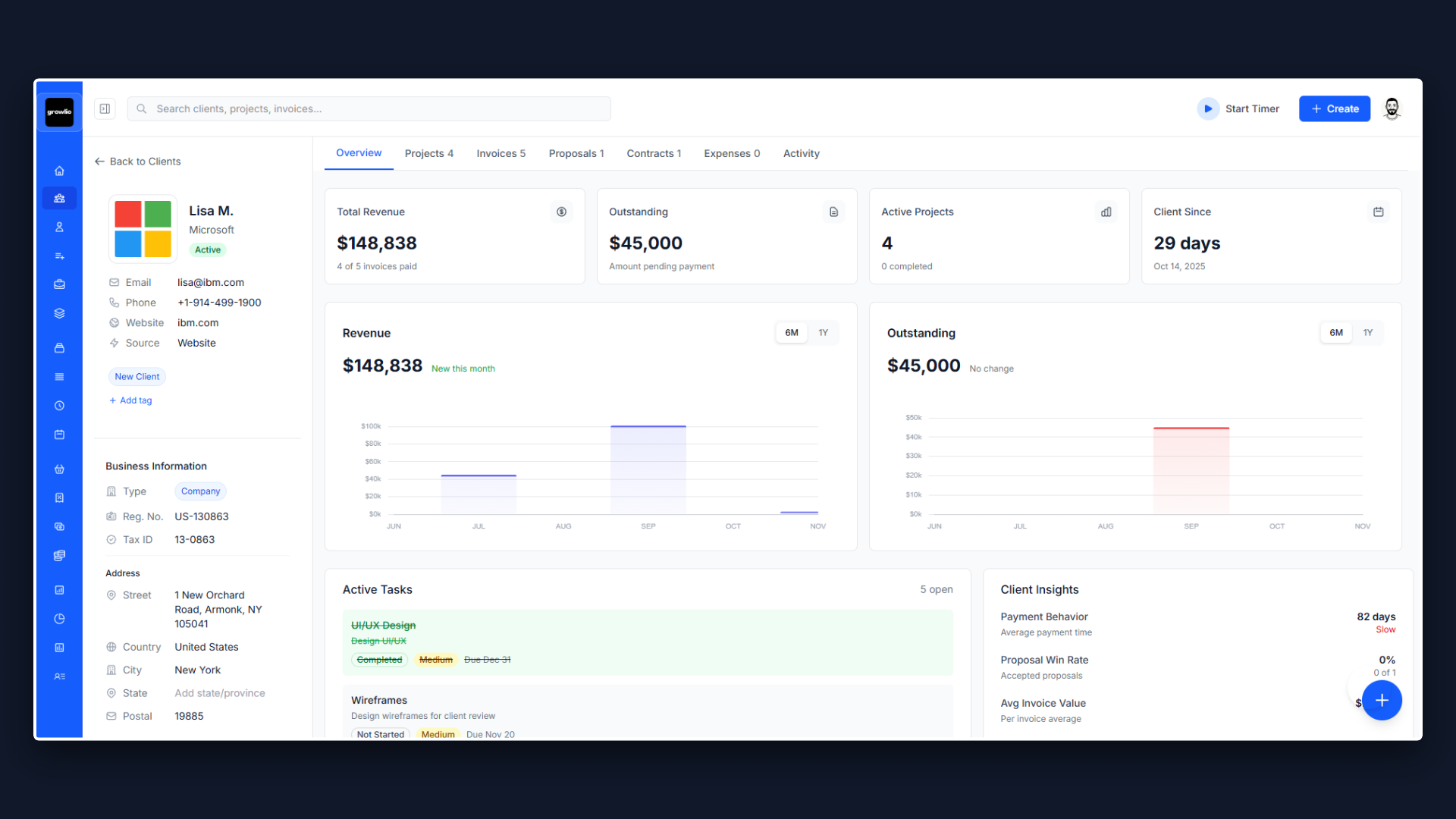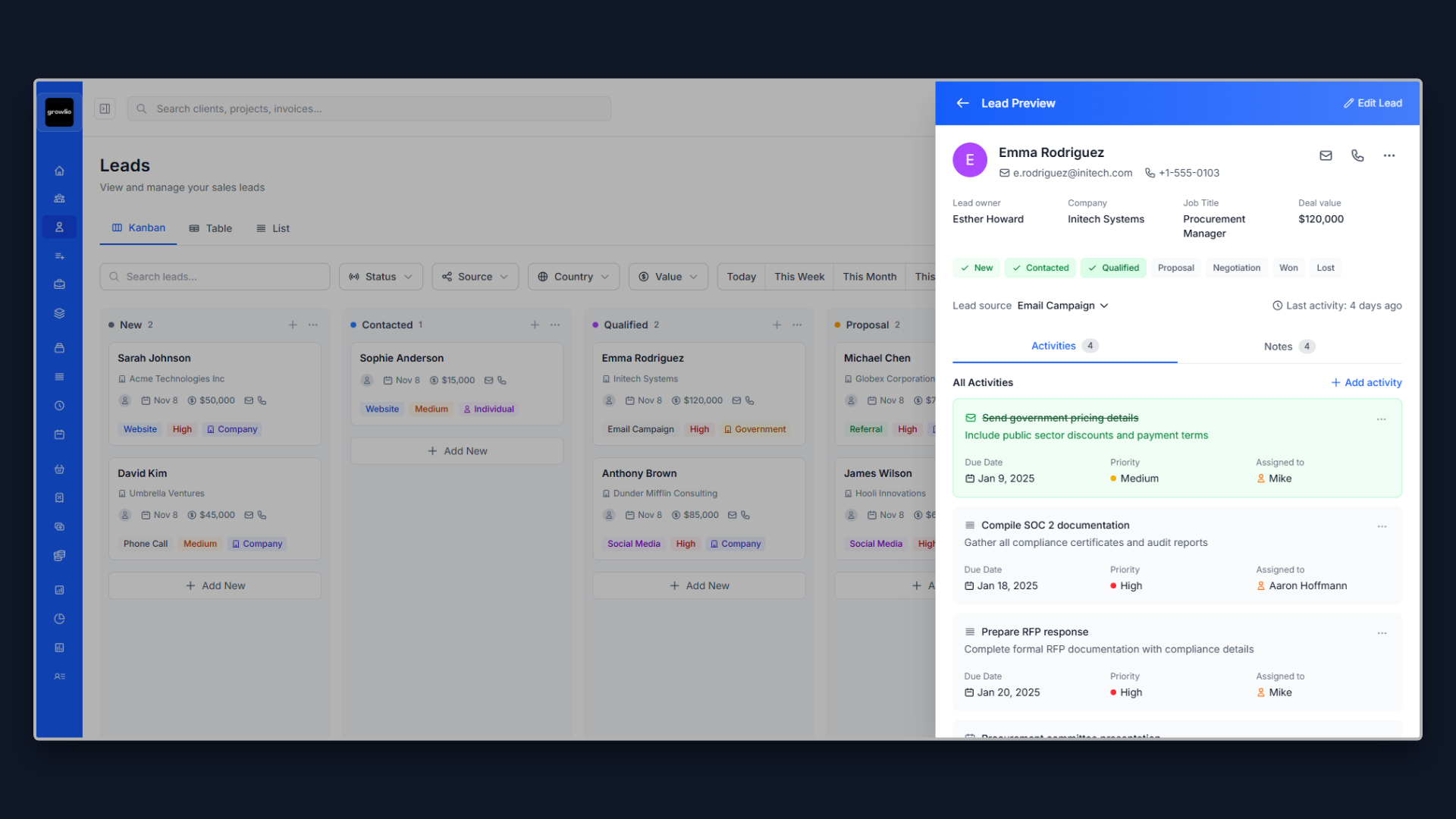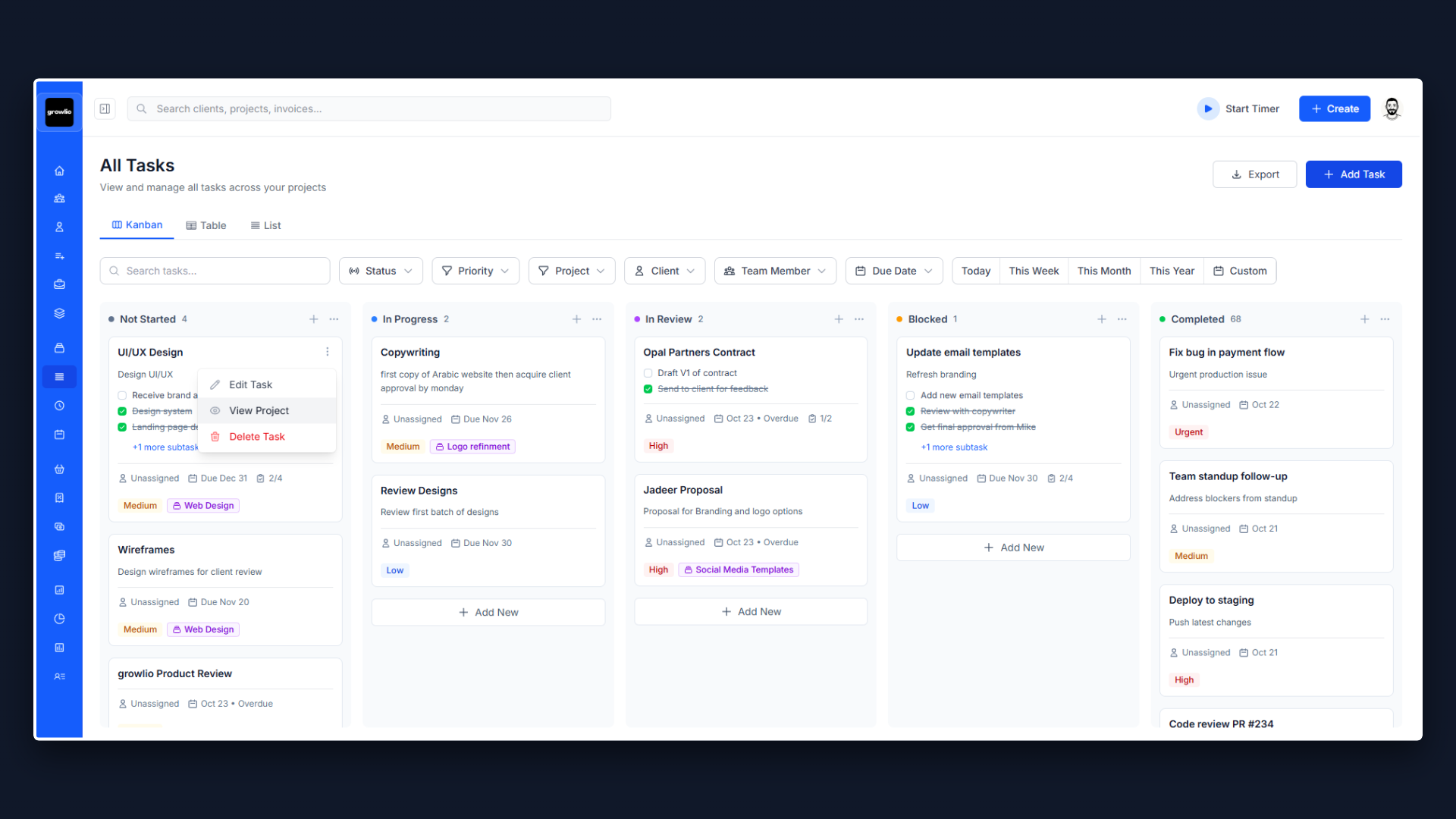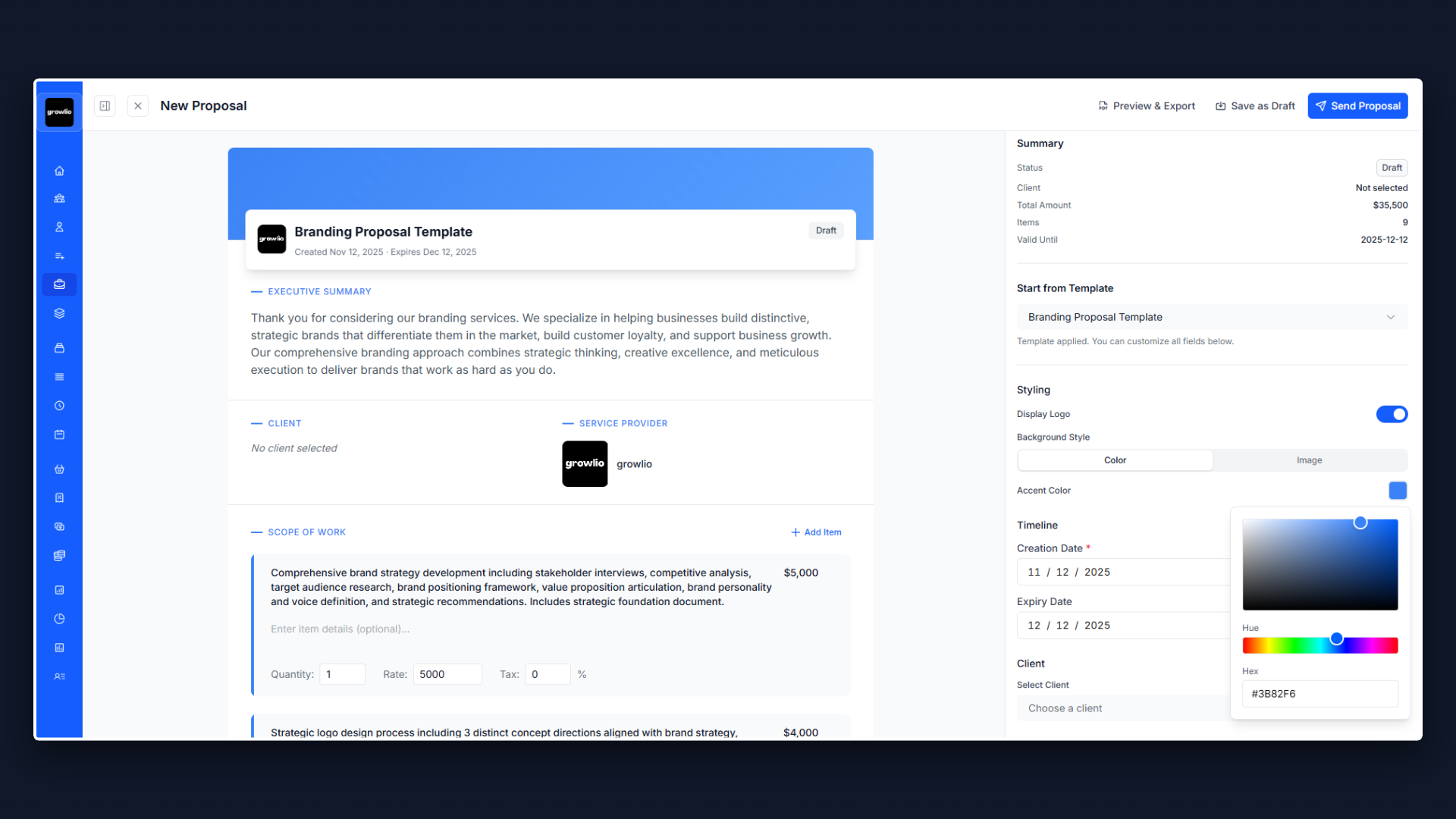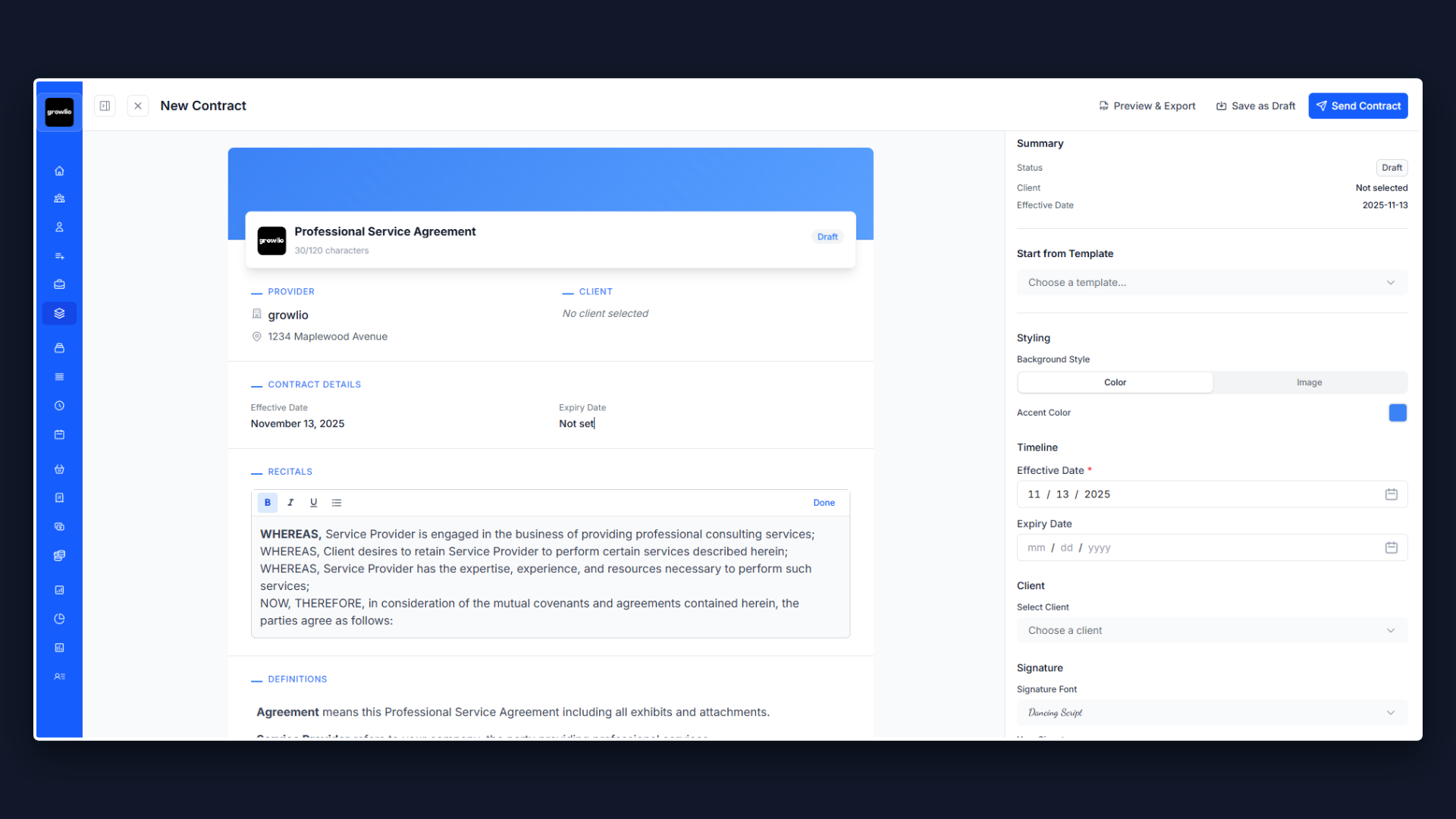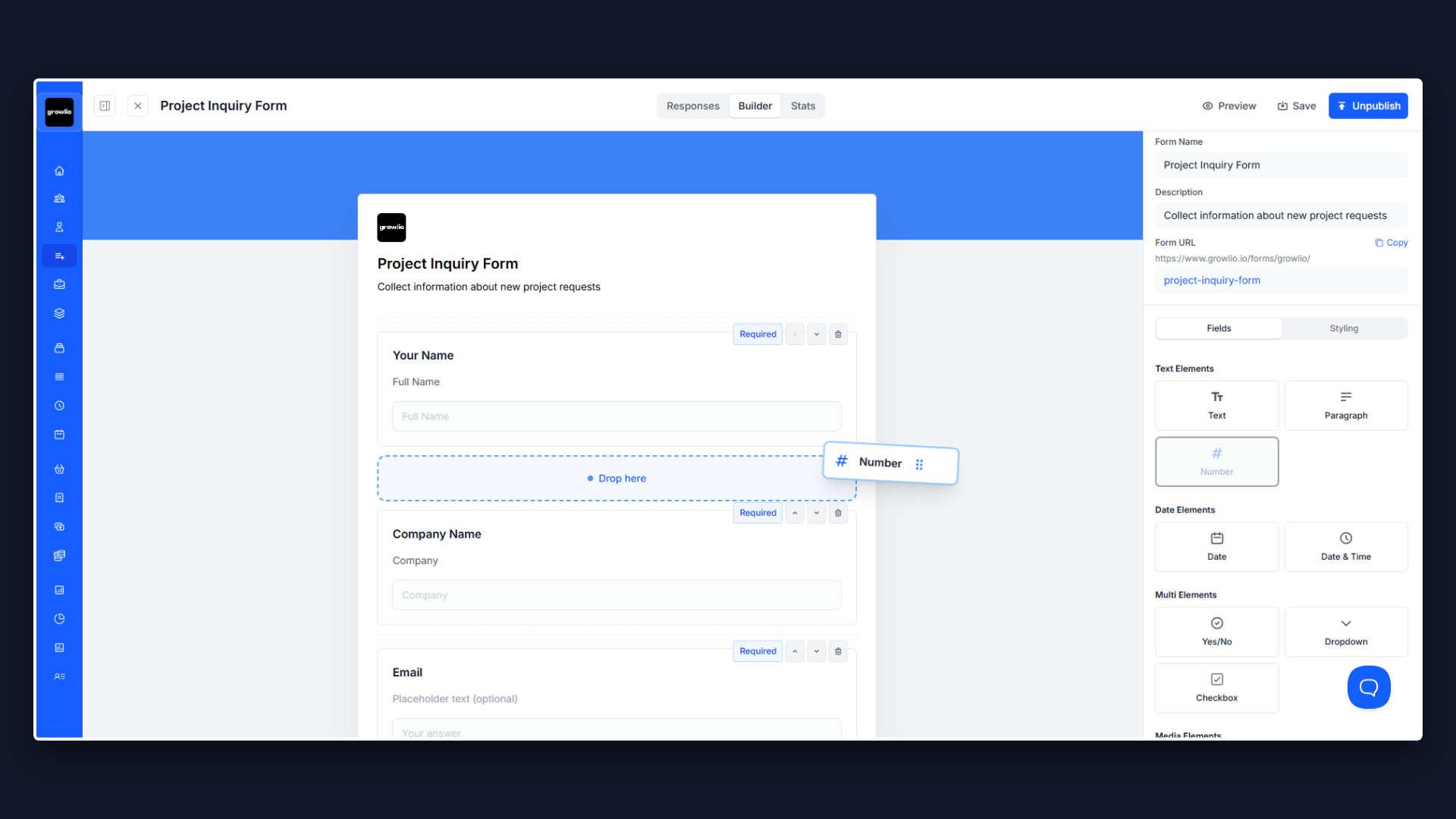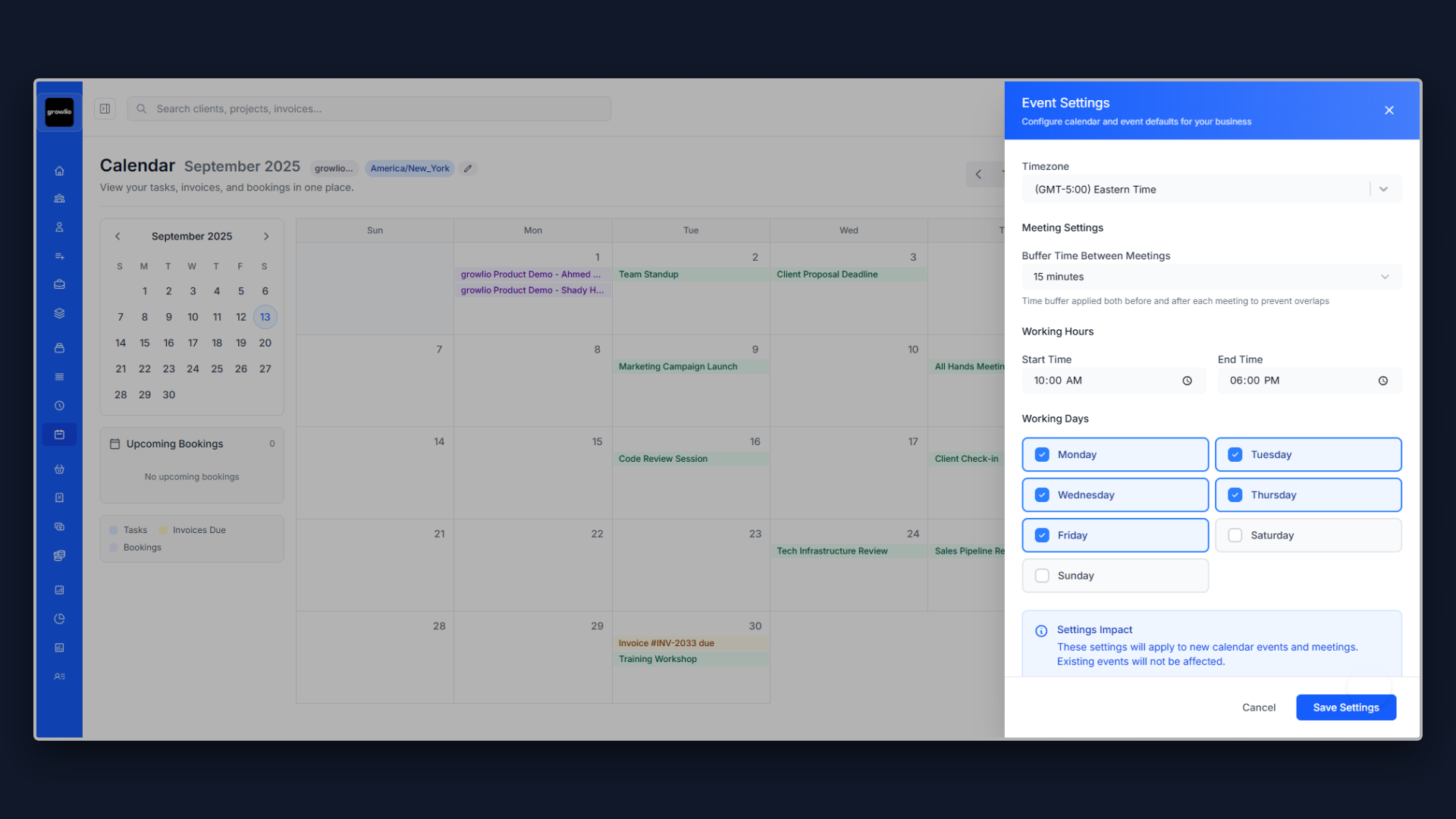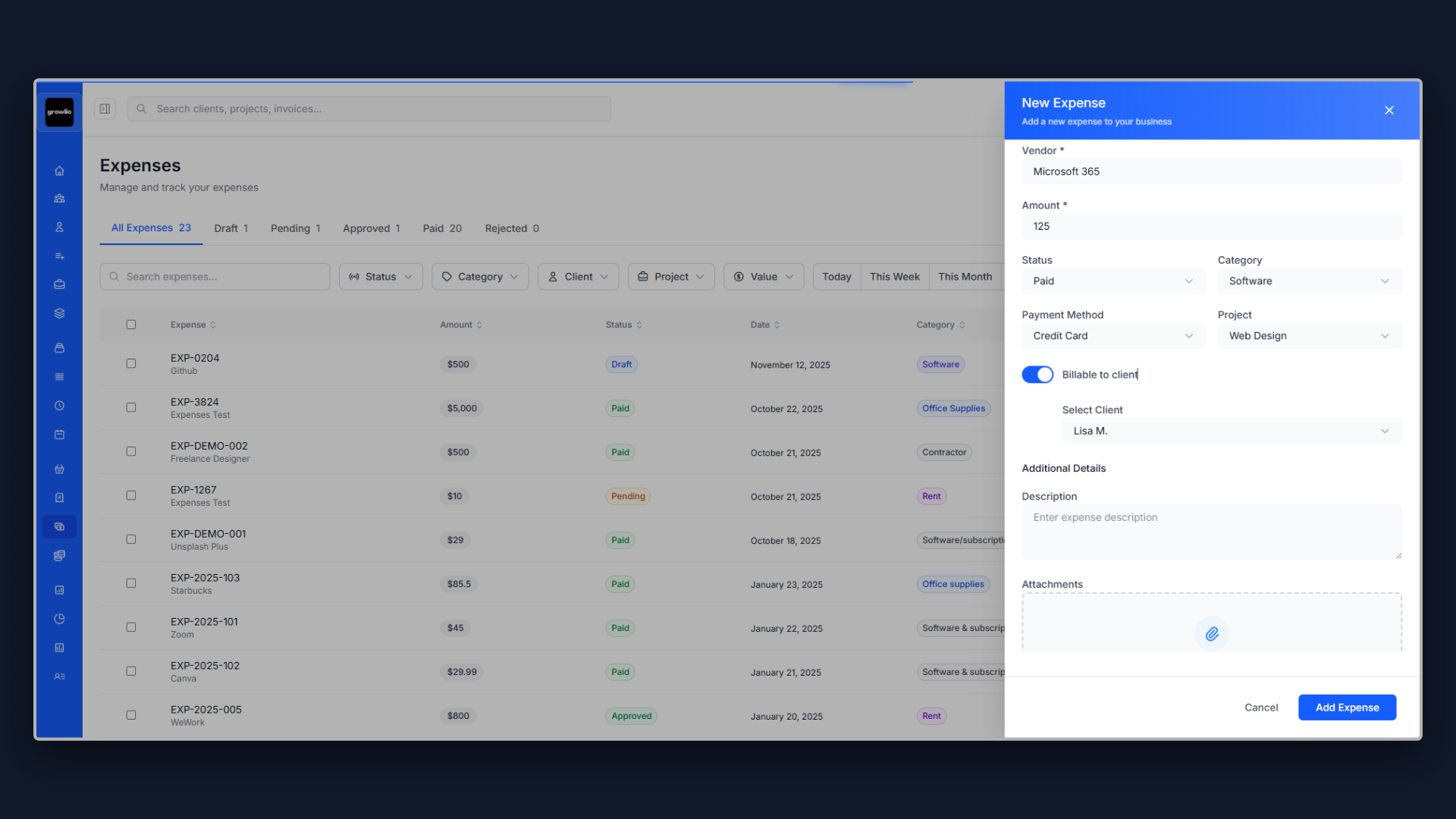Why Your Lead Generation Proposal Makes or Breaks Your Business
As a lead generation specialist or marketing agency, you know that 61% of marketers say lead generation is their biggest challenge and that businesses with mature lead generation strategies achieve 133% more revenue than average. But here is the harsh reality: even if you are exceptional at generating qualified leads and building sales pipelines, you will struggle to win clients if your proposals do not demonstrate your value clearly.
The lead generation industry generates over $3 billion annually, with businesses spending an average of $198 to acquire each lead and desperately seeking better, more efficient lead gen strategies. Yet many talented lead generation specialists lose contracts to competitors who simply write better proposals. This has nothing to do with your lead gen skills and everything to do with how you present them.
Your lead generation proposal is your first impression, your sales pitch, and your contract all rolled into one document. It needs to educate prospects who may be frustrated with poor quality leads while simultaneously proving you are the expert they need. This is a delicate balance that many get wrong.
1. Start With the Client's Current Lead Generation Problems, Not Your Services
The biggest mistake lead generation specialists make is leading with a list of services: "We offer lead magnets, landing pages, email automation..." Your prospect does not care about your services yet. They care about their problems.
Start your proposal by demonstrating you understand their specific lead generation situation. Are they getting traffic but no conversions? Are leads too low-quality for sales to close? Is their cost per lead unsustainable? Do they have no lead nurturing system leaving money on the table? Are they relying on expensive paid ads with declining ROI? Do they lack a predictable pipeline? Address these pain points explicitly.
For example: "Our analysis shows your website receives approximately 5,000 monthly visitors but only converts 0.8% into leads—generating about 40 leads per month. Industry benchmarks for your sector are 2-4% conversion rates, meaning you are leaving 60-160 potential leads on the table every month. Your current cost per lead from paid ads is $185, which is 87% higher than industry average of $99. Additionally, your sales team reports that only 15% of leads are sales-qualified, wasting significant time on unqualified prospects. A strategic lead generation program could double your lead volume to 100-150 qualified leads monthly while reducing cost per lead by 40-50%, generating an additional $300,000-500,000 in annual pipeline value."
This approach immediately shows you have done your homework and understand what is at stake. Now they are ready to hear your solution.
2. Include a Lead Generation Audit to Demonstrate Your Expertise
Nothing builds credibility faster than showing you have already analyzed their lead generation funnel. Include a brief audit section highlighting 3-5 critical issues:
Conversion Funnel Problems: Website conversion rate of 0.8% vs. industry benchmark 2-4%, no compelling lead magnets or offers to capture visitors, missing or poorly optimized landing pages, weak or confusing calls-to-action, no clear value proposition communicating why visitors should convert.
Lead Quality Issues: Sales team reports only 15% of leads are qualified, no lead scoring or qualification criteria, accepting any form fill as a lead regardless of fit, missing key qualifying questions on forms, no lead nurturing process to educate and qualify prospects before sales handoff.
System and Process Gaps: No CRM or lead management system, leads going into spreadsheets or email, no automated lead nurturing sequences, slow lead response time (48+ hours vs. best practice 5 minutes), no lead tracking or attribution understanding which sources work, sales and marketing misaligned on lead definitions.
Traffic and Channel Deficiencies: Over-reliance on expensive paid ads for lead generation, no organic lead generation channels (content, SEO, social), high cost per lead making unit economics unsustainable, no retargeting of website visitors who did not convert, missing opportunities to convert existing traffic before spending more on acquisition.
This mini audit serves multiple purposes: it proves you know what you are doing, it creates urgency by highlighting problems, and it makes your proposed solutions feel essential rather than optional.
3. Break Down Your Lead Generation Strategy Into Clear Phases
Lead generation is multifaceted, but your proposal should not be confusing. Break your strategy into clear, logical phases.
Phase 1: Foundation & Strategy (Week 1-2)
Lead generation audit and funnel analysis, ideal customer profile and buyer persona development, lead magnet strategy and offer creation, conversion funnel mapping and optimization plan, CRM selection and setup (HubSpot, Salesforce, etc.), lead qualification criteria and scoring model, measurement framework and KPI definition.
Phase 2: Asset Creation & Setup (Week 2-4)
Lead magnet creation (ebook, checklist, template, webinar, etc.), high-converting landing page design and copywriting, thank you pages and confirmation sequences, lead capture forms with strategic qualifying questions, email automation and nurturing sequence setup, CRM integration and workflow automation, tracking and analytics implementation.
Phase 3: Traffic & Conversion Optimization (Week 4-8)
Organic traffic strategies (content, SEO, social), paid traffic campaigns if budget allows, conversion rate optimization and A/B testing, retargeting campaigns for unconverted visitors, referral and partnership programs, exit-intent popups and conversion triggers, continuous testing and iteration.
Phase 4: Nurturing & Qualification (Week 8+)
Automated lead nurturing sequences, lead scoring based on engagement and behavior, sales-ready lead identification and handoff, sales and marketing alignment processes, lead pipeline reporting and forecasting, continuous optimization based on conversion data, scaling successful channels and tactics.
This phased approach makes lead generation feel manageable and shows you have a systematic methodology for building predictable pipelines.
4. Set Realistic Expectations About Lead Volume and Timeline
One of the fastest ways to lose trust is overpromising results. Clients appreciate honesty about lead generation timelines and what is achievable.
Be explicit: "Lead generation requires building systems and assets before leads flow consistently. Initial setup takes 3-4 weeks, with first leads typically coming in week 4-5. Volume ramps over 2-3 months as systems optimize and traffic grows. By month 3, most clients see 50-200% increase in qualified lead volume compared to their starting point. Sustainable, scalable lead generation takes 3-6 months to fully mature."
Provide a realistic projection: "Based on your current traffic and industry benchmarks, we project: Month 1: Foundation building, lead magnets and landing pages launched, 20-40 new leads (while systems ramp up). Month 2: Optimization begins, conversion rate improving, 50-80 new leads generated. Month 3: Systems optimized, nurturing sequences converting, 80-120 new qualified leads. Month 4-6: Scaled lead generation, 100-150+ qualified leads monthly at 40-50% lower cost per lead than current state."
Address lead quality expectations: "We focus on qualified leads, not just volume. A qualified lead meets your ideal customer profile, has genuine need or interest, has budget authority or influence, and is ready to engage with sales within reasonable timeline. We would rather deliver 100 qualified leads than 500 junk form fills that waste sales time. Lead scoring and nurturing ensure only sales-ready prospects reach your team."
This honesty builds trust and prevents unrealistic expectations that doom client relationships.
5. Explain Your Lead Magnet and Offer Strategy
Many clients do not understand what makes compelling lead magnets. Use your proposal to educate them on your strategic approach.
Explain that effective lead magnets are: highly valuable and relevant to your target audience (solving a real pain point), specific and focused (not generic 50-page ebooks but actionable quick wins), quick to consume (15-minute read, single-page checklist, short video), positioned at the right funnel stage (top-of-funnel for awareness, middle for consideration), low barrier to entry (email is easier commitment than phone number plus company details), visually professional and on-brand, and delivering immediate value (not just sales disguised as content).
Outline lead magnet types: "Different lead magnets serve different purposes: Educational content (ebooks, guides, whitepapers) for thought leadership and awareness, Tools and templates (calculators, checklists, swipe files) for immediate utility, Exclusive access (webinars, workshops, demos) for high-intent prospects, Research and data (industry reports, benchmarks) for credibility and shareability, Assessments and audits (quizzes, scorecards) for personalization and qualification. We select the lead magnet type that best matches your audience and funnel stage."
Give specific examples: "Instead of a generic '50 Marketing Tips' ebook that everyone ignores, we create targeted lead magnets like 'The 7-Question Sales Qualification Framework That Increased Our Close Rate 40%' (actionable template) or '2025 B2B SaaS Pricing Benchmark Report' (exclusive data). Specific, valuable lead magnets convert 3-5x better than generic content."
This demonstrates you understand lead magnet psychology and conversion optimization.
6. Address Landing Pages and Conversion Optimization
Landing page optimization is critical for lead generation success. Explain your approach to maximizing conversions.
Explain landing page best practices: "High-converting landing pages include: attention-grabbing headline focused on visitor benefit, clear subheadline elaborating on value proposition, compelling hero image or video showing the result or solution, bullet points highlighting specific benefits (not features), social proof (testimonials, logos, statistics) building credibility, single focused call-to-action (no navigation distractions), short form requesting minimum necessary information, trust indicators (security badges, privacy assurance), mobile-optimized responsive design, fast loading speed (under 3 seconds). Every element is strategically designed to convert visitors."
Outline conversion optimization process: "We continuously optimize landing pages through: A/B testing headlines, copy, images, and CTAs, heatmap analysis showing where visitors click and scroll, form field testing (finding optimal number of fields), exit-intent popups capturing abandoning visitors, page speed optimization for better conversion, trust element testing (which social proof works best), mobile experience optimization (60% of traffic is mobile). Small improvements compound—a 0.5% conversion lift generates 10-20 more leads monthly."
Address form strategy: "Form fields are the conversion gatekeepers. We balance lead quality with conversion rate: fewer fields increase conversion but may reduce lead quality, strategic qualifying questions filter unqualified prospects early, progressive profiling asks for more information over time, conditional logic shows relevant questions based on answers, clear value exchange (tell visitors what they get in return for information). Typically, 3-5 fields strike the right balance for most B2B lead generation."
7. Explain Your Lead Nurturing and Automation Strategy
Lead nurturing is where most businesses leave money on the table. Educate prospects on this critical component.
Explain nurturing importance: "Only 3-5% of leads are ready to buy immediately—the rest need nurturing. Studies show nurtured leads produce 50% more sales-ready leads at 33% lower cost. Lead nurturing keeps you top-of-mind while educating prospects, builds trust and authority over time, qualifies leads based on engagement and behavior, and identifies sales-ready moments through scoring. Companies without nurturing leave 95% of leads unconverted."
Outline nurturing strategy: "We build automated nurturing sequences including: welcome series introducing your company and value proposition, educational content series addressing common questions and objections, case study and social proof series demonstrating results, product or service deep-dives for consideration stage, competitive comparison content for decision stage, re-engagement campaigns for dormant leads. Sequences are behavior-triggered—content adapts based on what leads engage with."
Address lead scoring: "Lead scoring identifies sales-ready prospects automatically: demographic scoring (job title, company size, industry fit with your ICP), behavioral scoring (email opens, link clicks, page visits, content downloads), engagement scoring (time since last activity, frequency of engagement), negative scoring (unsubscribes, certain behaviors indicating low fit). When leads hit threshold score (example: 75 points), they automatically route to sales as qualified opportunities. This prevents sales from wasting time on unready prospects."
8. Explain Your CRM and Technology Stack Approach
Technology enables scalable lead generation. Show prospects you have technical expertise.
Explain CRM importance: "A CRM (Customer Relationship Management system) is essential for lead generation at scale. CRMs centralize all lead information in one place, track every interaction and touchpoint, automate lead assignment to sales reps, enable lead scoring and qualification, provide pipeline visibility and forecasting, integrate with marketing automation, and generate reports showing what is working. Without a CRM, leads fall through cracks and opportunities are lost."
Outline recommended stack: "We typically recommend: CRM platforms (HubSpot for small businesses, Salesforce for enterprises, Pipedrive for sales-focused teams), Marketing automation (HubSpot, ActiveCampaign, Marketo) for email nurturing and workflows, Landing page builders (Unbounce, Leadpages, or native CRM pages), Form builders (Typeform, Gravity Forms, or CRM forms), Analytics (Google Analytics, Mixpanel) for attribution and funnel tracking, Call tracking (CallRail) for phone lead attribution. We select tools matching your budget and technical sophistication."
Address integration: "All tools must integrate seamlessly: forms capture leads into CRM automatically, CRM triggers marketing automation sequences, email engagement updates lead scores in CRM, sales activity logged in CRM updates marketing campaigns, attribution data flows from analytics to CRM. Proper integration eliminates manual work, prevents data silos, and provides complete lead visibility."
9. Explain Your Lead Qualification and Sales Alignment Process
Lead quality and sales alignment are critical pain points. Address them proactively.
Explain qualification framework: "We use clear qualification criteria ensuring only ready prospects reach sales: BANT framework (Budget, Authority, Need, Timeline), CHAMP framework (Challenges, Authority, Money, Prioritization), or custom criteria matching your sales process. Qualification happens through: strategic form questions filtering obvious mismatches, lead scoring based on demographics and behavior, nurturing sequences educating and self-qualifying, sales development rep (SDR) qualification calls if applicable. Clear criteria prevent sales from chasing bad fits."
Outline sales and marketing alignment: "Sales and marketing must agree on: ideal customer profile definition, lead qualification criteria, service level agreements (SLA) for follow-up speed, feedback loop on lead quality, closed-loop reporting showing which leads close, shared responsibility for revenue goals. We facilitate alignment through: regular sales and marketing meetings, shared dashboards showing pipeline and results, lead quality surveys and feedback mechanisms, continuous optimization based on sales input. Alignment increases conversion rates by 67%."
Address lead handoff process: "We create smooth lead handoff from marketing to sales: automated notification when lead reaches qualified status, lead enrichment providing sales with context and talking points, CRM notes summarizing lead journey and interests, suggested next steps and talk tracks for sales calls, fast response time (within 5 minutes increases conversion 10x), nurturing continues even after sales handoff until deal closes. Clean handoff ensures no leads are lost in transition."
10. Include Case Studies and Proof of Results
Nothing sells like proven results. Include 2-3 relevant lead generation case studies showing lead volume increases and cost reductions.
Format them simply: Client: B2B SaaS company selling project management software. Challenge: Only 35 monthly leads at $220 cost per lead, 12% qualified rate, unpredictable pipeline. Strategy: Created gated ROI calculator and implementation checklist lead magnets, built optimized landing pages, implemented HubSpot with lead scoring, launched nurturing sequences, optimized organic and paid traffic. Results: 142 monthly qualified leads (306% increase), $88 cost per lead (60% reduction), 58% qualified rate (sales time focused on real opportunities), predictable $180,000 monthly pipeline, 2.1x ROI on lead generation investment.
Show specific metrics: "Our average lead generation program delivers: 150-300% increase in monthly lead volume, 40-60% reduction in cost per lead, 2-4x improvement in lead quality and sales acceptance rate, 30-50% improvement in landing page conversion rates, 20-35% increase in pipeline value, positive ROI within 3-4 months. Results compound over time as systems optimize."
Address realistic expectations: "Not every campaign is a home run. Some lead magnets convert better than others. Some channels outperform. We continuously test, measure, and optimize—doubling down on what works and cutting what does not. Our process delivers consistent results even when individual tactics vary in performance."
If you are newer to lead generation, reference: lead gen results from previous agency work or employment, personal business or startup lead generation success, case studies focused on specific tactics (landing page before/after, email sequence results), or client testimonials even without specific metrics.
11. Transparent Pricing That Reflects Value
Lead generation pricing varies by scope and channels. However, vague pricing makes clients nervous.
Provide clear pricing tiers: Starter Lead Gen Package - $3,500/month: Lead generation strategy and funnel audit, 2 lead magnets and landing pages created, basic email nurturing sequence (5-7 emails), CRM setup and integration (HubSpot or similar), monthly reporting and optimization, expected output: 50-80 qualified leads per month. Growth Lead Gen Package - $6,500/month: Everything in Starter, plus 4 lead magnets and landing pages, advanced nurturing sequences with branching logic, lead scoring and qualification automation, conversion rate optimization and A/B testing, organic traffic strategies (content, SEO), paid traffic management (ad spend separate), expected output: 100-150 qualified leads per month. Enterprise Lead Gen Package - $12,000/month: Everything in Growth, plus 6+ lead magnets and landing pages, comprehensive multi-touch nurturing campaigns, advanced lead scoring and sales intelligence, dedicated account manager, sales enablement and alignment, full-funnel attribution reporting, aggressive optimization and scaling, expected output: 200-300+ qualified leads per month.
Explain what is included: "Our pricing includes: strategy and ongoing optimization, all asset creation (lead magnets, landing pages, emails), CRM and automation setup and management, monthly reporting and analysis, unlimited email support and communication. Ad spend for paid traffic is separate and billed directly by platforms (we recommend $2,000-5,000/month for paid programs)."
Address ROI perspective: "View lead generation as an investment with measurable return. If each qualified lead is worth $500 in pipeline value and we generate 100 additional leads monthly, that is $50,000 in monthly pipeline for a $6,500 investment—a 7.7x return. Most clients see 3-5x ROI within 6 months as systems mature."
12. Make Next Steps Crystal Clear
Do not leave your prospect wondering what happens next. End your proposal with a clear call to action and process.
"Ready to build a predictable, scalable lead generation system that fills your sales pipeline with qualified opportunities? Here is how we get started: Step 1: Sign the proposal and return it by [date] to reserve your start date. Step 2: We will schedule a kickoff call within 48 hours to finalize strategy and ICP. Step 3: Foundation work begins immediately—lead magnets and landing pages in development. Step 4: First leads flowing by week 4-5, ramping to target volume by month 3. Questions? Schedule a call with me at [calendar link] or reply to this email."
This removes friction and makes it easy for prospects to say yes. The clearer you make the path forward, the more likely they are to take it.
Final Thoughts on Lead Generation Proposals
Your lead generation proposal is not just a formality—it is a sales tool, an educational resource, and a trust-building document. The lead generation specialists who win the most clients are not always the ones with the fanciest tools; they are the ones who best explain lead generation strategy and ROI in a way that makes sense to business owners.
Take the time to customize each proposal for your prospect. Reference their current conversion rates, cost per lead, and lead quality issues. Show that you have done the research. Demonstrate your expertise through a lead generation audit and strong case studies with proven metrics. Set realistic expectations about timeline and lead volume. And make it easy to say yes.
Remember: a great lead generation proposal proves you understand their business and sales process, demonstrates you have systematic methodology for generating qualified leads, shows evidence you can deliver measurable increases in pipeline, and makes the investment feel worthwhile. Get these elements right, and you will win more contracts—even if your competitors have bigger teams or lower prices.
